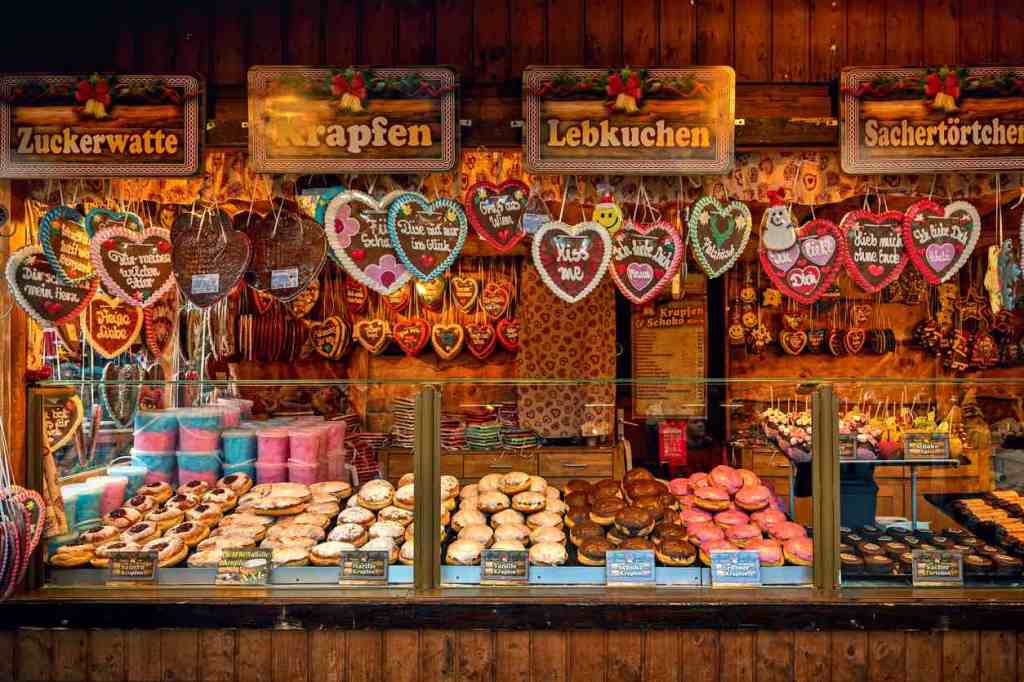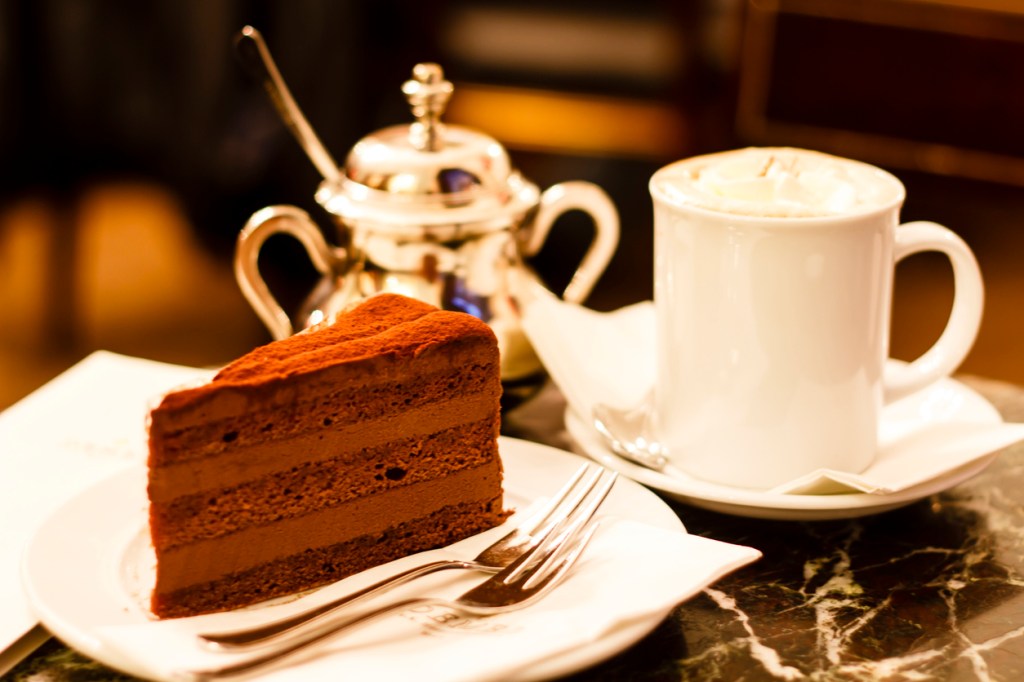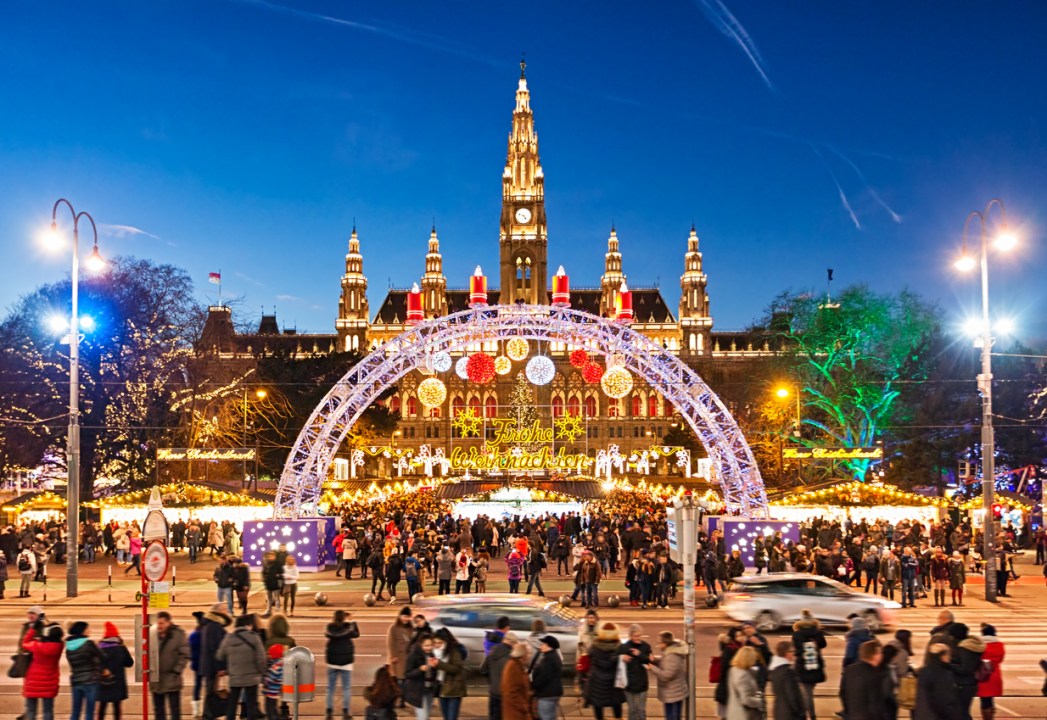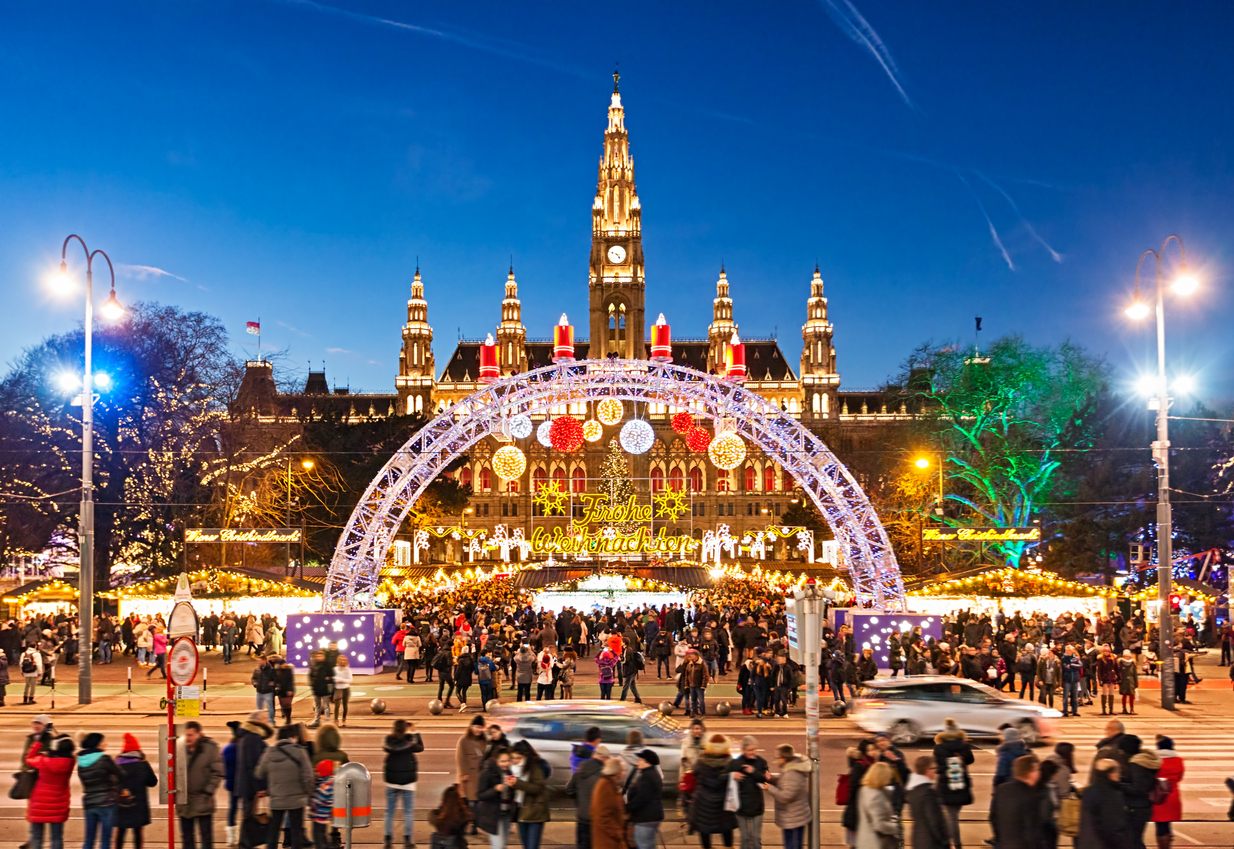Oh, Vienna. Home to Mozart, Beethoven, Haydn, Freud, the Danube, waltzing and coffee house culture, to name but a few. Famous for its history and culture, the Austrian capital’s cobbled streets fizz with stories of ages past.
In my opinion, there is no better time to visit than in the winter – and the run-up to Christmas in particular. This city knows how to do Christmas. The streets are lit with a plethora of Christmas lights, some of which have acquired fame in their own right (I am told a friendly rivalry exists between the fans of the chandeliers on Graben – designed to create the impression of a gigantic outdoor ballroom – and the ‘curtain of lights’ around the corner on Kohlmarkt).
But the biggest draw of all are Vienna’s Christmas markets. Numbering 17 in total officially, they are scattered across the city’s 23 districts. Christmas markets of the type found in Europe don’t really exist in the UK – we do our best to imitate them, but for the real deal a trip to Europe is a must, and the ones in Vienna are among the best the continent has to offer. Huddles of illuminated, twinkling booths sell mulled wine and hot food including bratwurst sausages, cheese fondue, crepes and chestnuts. They are also an excellent place to shop for presents with all manner of knick-knacks on sale, including wool and sheepskin goods, beeswax candles and honey, jewellery, liquor and Christmas decorations.
‘Kaiserschmarrn’, which literally translates as ‘the Kaiser’s rubbish’, is much more delicious than it sounds and consists of shredded pancake with a sweet plum or apple sauce
While you can find similar products across Vienna’s Christmas markets, each destination has its own USP. The Stephansplatz market at the foot of St Stephen’s Cathedral in the city centre, for example, specialises in high-quality handcrafted goods. The market on the Am Hof square mainly sells food, while the market by Freyung prides itself on being a traditional – it doesn’t have any pop music playing, as many do, but periodically brings in live carol singers to perform traditional music. The market in Spittelberg, one of the city’s oldest districts, is split between several cobbled streets, making it particularly atmospheric, and predominantly sells eco-friendly, handmade products.
Wandering from market to market, there are a few treats worth looking out for that make a visit feel particularly Austrian. Instead of mulled wine, go for the traditional ‘Puntsch’ – a kind of alcoholic fruit punch (non-alcoholic versions are also available) made up of fruit tea, a variety of alcohol and spices. It’s usually about €7 a cup, part of which is a refundable if you return the cup (although each Christmas market has its own cup design, making them fun souvenirs to keep). You should also give Kaiserschmarrn a try (€6). Literally translating as ‘the Kaiser’s rubbish’, it’s much more delicious than it sounds and consists of shredded pancake with a sweet plum or apple sauce, apparently so called after the Emperor Franz Joseph ate it with exasperation after it had been presented to, and rejected by, his wife the Empress Elizabeth in the 19th century. He liked it so much he began to request it regularly – but nevertheless the name stuck. At Spittelberg’s market look out for its unique ‘Erdapfelpuffer’ (€4.50) – a type of large potato rösti which is dipped in garlic sauce once fried and bsolutely delicious.

For those who don’t know where to start, tours of the Christmas markets exist. The one run by Rebel Tours (€25 per person) is particularly good fun and combines historical facts with trivia about the markets.
The Christmas markets in Vienna open at around midday, meaning there is plenty of time to explore the city before you start shopping. For those in search of a bit of culture, Vienna’s largest art gallery, the Albertina, has a great collection of classic art (adult entry €18.90). You can also visit the imperial Belvedere palace (adult entry €15.90) or go to a performance by the city’s famous Spanish riding school. For a bit of history, the Sigmund Freud museum (based in his former apartment – adult entry €14) is a must-see.
Vienna, of course, has a long and exalted musical history. I’d recommend a visit to the Haus der Musik (adult entry €16) which dedicates a room to each of the great composers who lived in the city (including, as mentioned before, Haydn, Mozart and Beethoven, as well as Mahler and the elder and younger Strauss). You can also visit Mozart’s apartment where he wrote the ‘The Marriage of Figaro’ for a deep-dive into his life and the Vienna of the period (adult entry €12). For a bit of live-action culture in true Viennese style, book a concert at the city’s gold-clad Musikverein, or an opera at the opera house.
It’s also worth taking time to simply wander the city – the city centre itself is relatively small, and the outer districts can be reached very quickly on Vienna’s efficient metro system. Much of its historic 18th century architecture remains, with beautiful tucked-away courtyards and narrow alleys that feel as though you’ve walked on to the set of a period drama and reveal all manner of independent shops and cafes.

You can’t talk about Vienna without mentioning its cuisine. Many of the city’s historic coffee houses still feature as a solid part of the average Viennese’s weekly routine. The majority retain their original 19th century form: high ceilinged, elaborately decorated wood-panelled rooms with beautiful tables and booths. You will usually find a selection of papers to peruse, and some have billiard tables or similar to while away a cosy hour with. They are most well-known for their extensive selections of coffee (both in varieties of coffee beans and elaborate servings) – the fun ‘Einspänner’, coffee poured over a big mound of whipped cream, is an indulgent treat. With any coffee, a slice of cake is a must – I’d recommend either the traditional apple strudel, the uniquely Viennese chocolate ‘Sachertorte’ or ‘Mohnschnitt’ (poppy seed cake). A coffee and slice of cake will usually come to no more than €10. For the most authentic coffee house experience, try Cafe Central or Cafe Sperl. Vienna’s coffee houses also serve hot meals, such as the famous schnitzel or Rindsuppe mit Frittaten, a clear beef broth with shredded savoury pancakes and chives in it – wholesome and restorative after a day in the cold.
For the best schnitzel in town, though, head to Figlmüller. This cosy, traditional restaurant claims to be home to the ‘original’ schnitzel – served larger than dinner plates and crispy and delicious. It traditionally comez with a lingonberry sauce and potato salad, although of course you can request variations. Mains here start from €12.50. If you’re keen to delve deeper into Austrian cuisine, a trip to Ludwig Van is a must. Located in the basement of an apartment block once occupied by Beethoven, the restaurant is designed in the tradition of a Germanic ‘Stube’: dark wood panelling, bare wooden tables and cosy up-lighting. However, while the restaurant’s surroundings give a nod to its heritage, the food it serves throws it forward firmly into the contemporary. Featuring a regularly changing set menu (which starts from €69), it puts an inventive modern spin on traditional Viennese dishes. All ingredients are as local as possible, with a selection of delicious Austrian wines and cocktails available too.
There are many accommodation options available around the city, catering to all tastes and budgets, but for a boutique experience consider the Hotel Josephine and Hotel MOTTO. Both opened within the past year and give a nod to Vienna’s roaring 20s. Decorated with decadent purples and pinks, Hotel Josephine has a distinctly art deco feel, with rotary dial telephones in each room, jazz playing in the breakfast room and a ‘phonotek’ with a gramophone and extensive record collection. Hotel MOTTO is larger, with a slightly more Wes Anderson feel to it, and has its own spa complex and excellent restaurant on the top floor.
Most of Vienna’s Christmas markets close on Boxing Day, but some do continue until the new year, so it’s worth checking which are still open should you be going after Christmas. Enjoy!







Comments